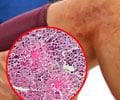Apart from your love for the animal, here's another reason that might prompt you to own a cat - a new study has revealed that early life exposure to cats can prevent asthma among children
Apart from your love for the animal, here's another reason that might prompt you to own a cat - a new study has revealed that early life exposure to cats can prevent asthma among children as they reach age five.
The new study from Columbia Centre for Children's Environmental Health (CCCEH) at Columbia University has found that children with cats in the home were more likely to have made allergy-related antibodies to cats.At three years of age, children who had made antibodies to cats early in life were more likely to have wheeze, a respiratory symptom associated with asthma. However, by age five, the same children who had grown up with a cat were then found to be less likely to have wheeze.
"While the study design does not allow us to recommend early cat ownership to prevent asthma, it does seem to indicate that avoidance of cats to prevent the development of asthma is not advised," said Matthew Perzanowski, lead researcher and assistant professor of Environmental Health Sciences at the Mailman School of Public Health.
However, once a child has asthma and is allergic to cats, the recommendation would still be to find a new home for the cat," he added.
During the study, the researchers controlled for other exposures that might have contributed to developmental problems such as socioeconomic factors and exposure to tobacco smoke and other environmental contaminants.
"Today's findings contribute to a further understanding of how the environment impacts child health," said Dr Rachel Miller, Irving Assistant Professor of Clinical Medicine at Columbia University; director, Asthma Project;
Advertisement
"The presence of cats in the home at a very early age seems to help reduce the risk of developing asthma. This is an important finding given the high prevalence of asthma in New York City and elsewhere," she added.
Advertisement
The study is published in the Journal of Allergy and Clinical Immunology.
Source-ANI
SRM











